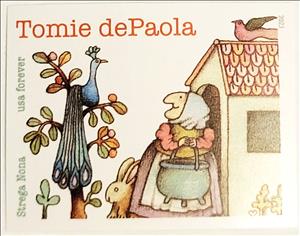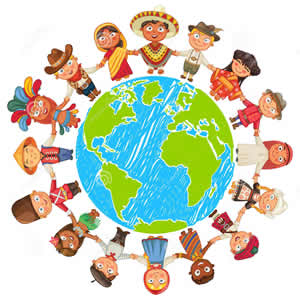Stamp: Tomie dePaola, Children's Author (United States of America 2023)
Tomie dePaola, Children's Author (United States of America 2023)
05 May (United States of America ) within release Tomie dePaola, Children's Author goes into circulation Stamp Tomie dePaola, Children's Author face value FOREVER No Face Value
| Stamp Tomie dePaola, Children's Author in catalogues | |
|---|---|
| Stamp Number: | Sn: US 5797a |
Stamp is horizontal format.
Stamp from limited-edition press sheet. Face value US$0.63 on day of issueAlso in the issue Tomie dePaola, Children's Author:
- Stamp - Tomie dePaola, Children's Author face value FOREVER;
- Full Pane - Tomie dePaola, Children's Author face value FOREVER;
- Stamp - Tomie dePaola, Children's Author face value FOREVER;
Stamp Tomie dePaola, Children's Author it reflects the thematic directions:
In legal discourse, an author is the creator of an original work, whether that work is in written, graphic, or recorded medium. The creation of such a work is an act of authorship. Thus, a sculptor, painter, or composer, is an author of their respective sculptures, paintings, or compositions, even though in common parlance, an author is often thought of as the writer of a book, article, play, or other written work.In the case of a work for hire, the employer or commissioning party is considered the author of the work, even if they did not write or otherwise create the work, but merely instructed another individual to do so.
Biologically, a child (plural: children) is a human being between the stages of birth and puberty. The legal definition of child generally refers to a minor, otherwise known as a person younger than the age of majority. Child may also describe a relationship with a parent (such as sons and daughters of any age) or, metaphorically, an authority figure, or signify group membership in a clan, tribe, or religion; it can also signify being strongly affected by a specific time, place, or circumstance, as in "a child of nature" or "a child of the Sixties". There are many social issues that affect children, such as childhood education, bullying, child poverty, dysfunctional families, child labor, hunger, and child homelessness. Children can be raised by parents, by fosterers, guardians or partially raised in a day care center.
A culture is a way of life of a group of people--the behaviors, beliefs, values, and symbols that they accept, generally without thinking about them, and that are passed along by communication and imitation from one generation to the next. Culture is symbolic communication. --the behaviors, beliefs, values, and symbols that they accept, generally without thinking about them, and that are passed along by communication and imitation from one generation to the next. Culture is symbolic communication.



